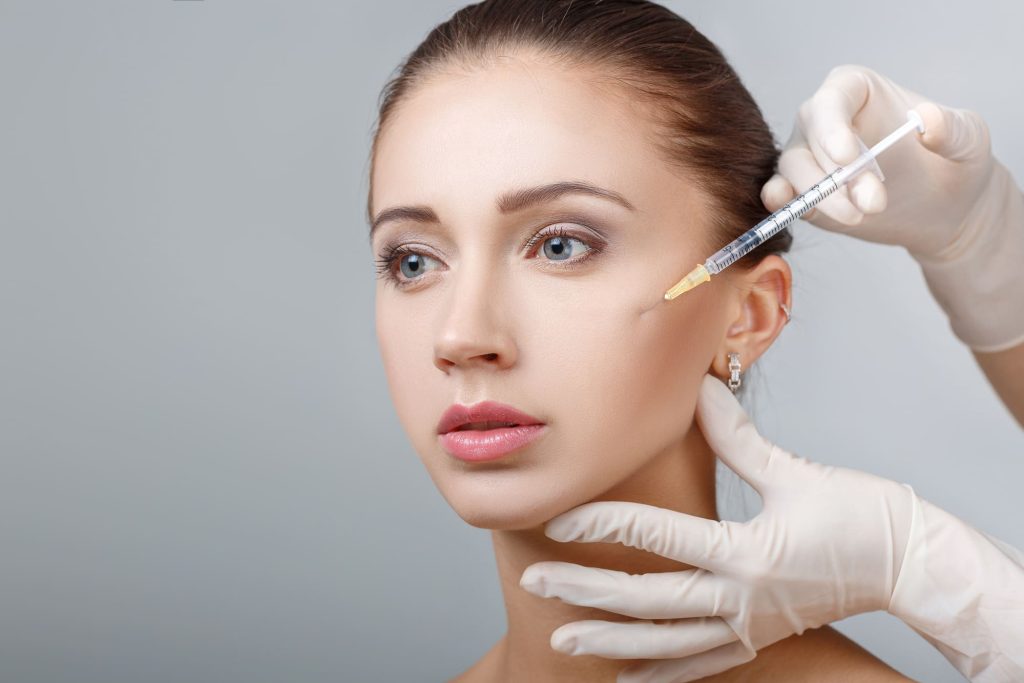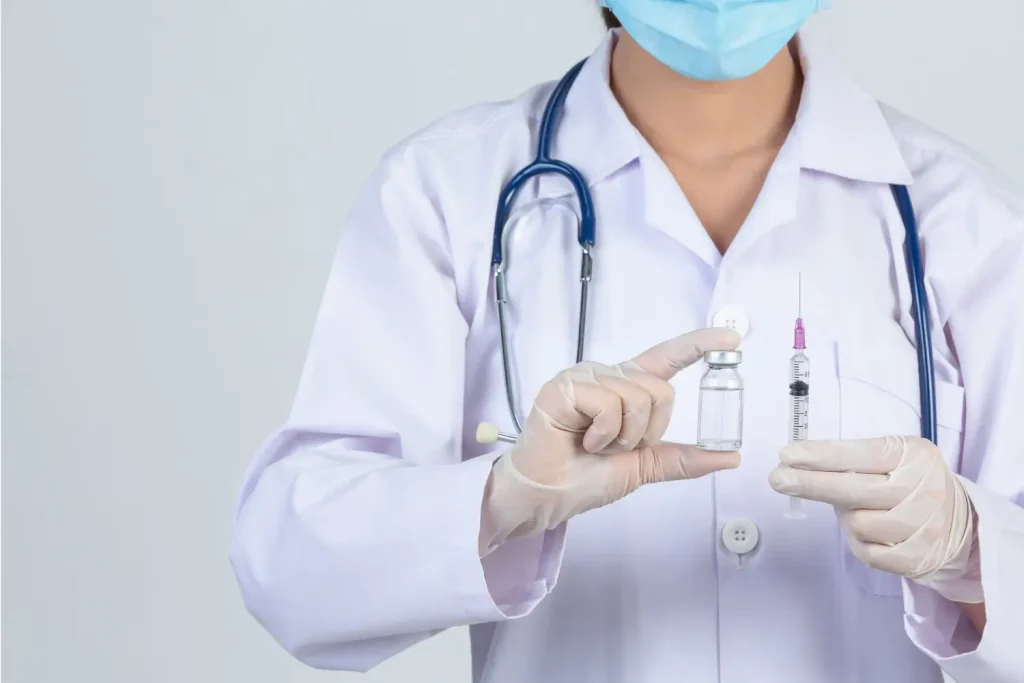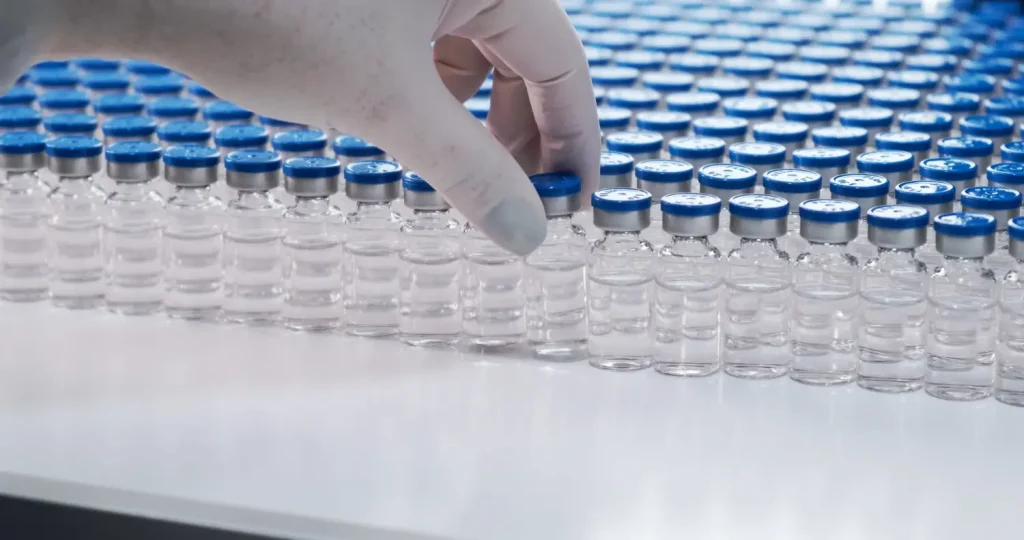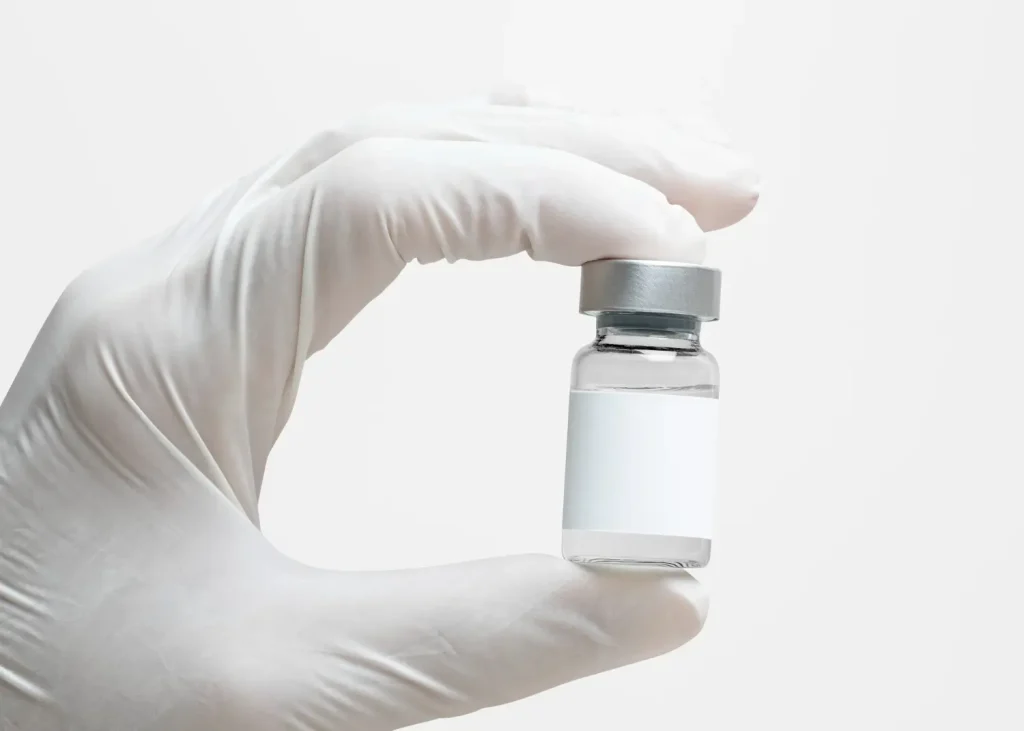Among the various injectable options available on the market, Restylane has established a reputation as a leading hyaluronic acid-based dermal filler, valued for its versatility and natural-looking results. Understanding Restylane and its applications is paramount for aesthetic doctors seeking to offer effective and safe treatments for their patients.
By the end of this read, you should be equipped to make informed decisions better and deliver exceptional patient outcomes.
What Is Restylane?
Restylane is a brand of HA-based dermal fillers that has gained widespread recognition in aesthetic medicine. Restylane utilizes a biodegradable, non-animal-based hyaluronic acid gel to replenish lost volume, smoothen wrinkles, and enhance facial contours.
The uniqueness of the Restylane treatment lies in its ability to offer tailored solutions for different aesthetic concerns.
The Restylane product range includes the following preparations:
- Basic Restylane filler – quickly copes with the first facial wrinkles, removes light nasolabial folds and fine lines on the forehead, and fills wrinkles in the perioral area keeping the achieved effect for a long time.
- Restylane Lyft is particularly effective for cheek augmentation and mid-face contouring.
- Restylane Refyne and Restylane Defyne offer flexibility and support for smoothing nasolabial folds and marionette lines while preserving natural facial expressions;
- Restylane Silk is optimized for lip enhancement, providing subtle and natural-looking results;
- Restylane SubQ, designed to model the contours of the face, can form the volume of thinned soft tissue areas and correct pronounced wrinkles.
- Restylane Kysse – correction of various aesthetic defects around the mouth.
- Restylane Volyme works to add volume to the cheeks, cheekbones, and chin.
Almost all products in the series have a version with lidocaine in the composition to relieve the patient of pain and to facilitate the introduction of a needle with the drug into the relaxed skin.
How Does Restylane Work?
Restylane works by attracting and binding to water molecules, further enhancing its hydrating and volumizing effects. The HA gel also stimulates collagen production over time, contributing to ongoing skin improvement and rejuvenation.
As Restylane are non-permanent fillers, their effects gradually wear off over several months to 1,5 years, depending on the product used and the patient’s metabolism. Follow-up treatments can help to maintain the desired results.
Procedure for Restylane Injections
Before administering Restylane treatments, conducting a thorough patient assessment and consultation is essential. Understanding the patient’s medical history, aesthetic goals, and expectations will help doctors determine the most appropriate treatment plan and manage patient expectations effectively.
During the consultation, doctors must discuss the benefits and limitations of Restylane and any potential risks or side effects. Setting realistic expectations is vital to ensure patient satisfaction and avoid disappointment.
Patients with a history of severe allergies or autoimmune disorders wouldn’t be suitable candidates for Restylane treatments.
The procedure involves the following steps:
- Preparation. The doctor cleans the treatment area to ensure it is free from makeup, dirt, or oils. A topical anesthetic cream or local anesthesia may be applied to minimize discomfort during the procedure.
- Injection. The success of Restylane treatments greatly depends on the skill and technique of the administering healthcare professional. Proper injection techniques can enhance the procedure’s safety and efficacy while minimizing patient discomfort.
Furthermore, the concept of layering, or the sequential injection of small amounts of filler, can help achieve more natural-looking results. This technique ensures that the filler is evenly distributed, preventing the appearance of lumps or overfilled areas.
Using a fine-gauge needle or a blunt-tipped cannula, the doctor carefully injects the Restylane gel into the predetermined areas of the face. The injection technique and depth vary based on the specific treatment goals, such as filling wrinkles or augmenting facial features.
- Sculpting and massaging. Once the filler is injected, the doctor may massage the treated areas gently to ensure even distribution and a smooth appearance.
- Post-treatment care. After the procedure, the doctor provides aftercare instructions to the patient, including avoiding excessive sun exposure, refraining from vigorous physical activities, and not touching or massaging the treated area for a few days.
Restylane Benefits
Restylane offers numerous benefits as a hyaluronic acid-based dermal filler, making it a popular choice for patients and medical professionals in aesthetic medicine. Some of the key benefits of Restylane treatments include:
- Natural-looking results;
- Versatility;
- Longevity;
- Non-permanent, which means that if a patient is dissatisfied with the results or experiences any adverse reactions, the effects will gradually fade over time;
- Safety profile ensures minimized risk of allergic reactions. Moreover, hyaluronic acid fillers like Restylane can be reversed using hyaluronidase in case of complications or undesired outcomes.
- Gradual correction – the results are built up over multiple sessions to achieve the desired outcome while ensuring a natural-looking transformation.
- Quick and efficient, with minimal downtime.
That said, the actual benefits experienced by each patient can vary based on their unique characteristics and treatment goals.
Potential Restylane Side Effects
Despite the strong overall safety profile of Restylane, adverse events can occur, and it is essential to be prepared to manage potential complications that may arise during or after Restylane treatments.
Some common side effects of Restylane injections include:
- bruising,
- swelling,
- redness,
- mild discomfort at the injection site.
Reactions are generally transient and resolve within a few days. Applying cold packs and advising patients to avoid certain medications or supplements that may increase the risk of bruising can help minimize these effects.
In rare cases, more severe adverse events, such as infection, allergic reactions, or vascular complications, may occur. Medical practitioners must recognize the signs of these complications and take appropriate action promptly.
To enhance patient safety, doctors should provide clear post-treatment care instructions and encourage patients to seek immediate medical attention if they experience any concerning symptoms or complications.
Combination Treatments
Restylane can be combined with other aesthetic procedures to yield synergistic effects and deliver better patient results.
Botulinum toxin injections can complement Restylane treatments by addressing dynamic wrinkles caused by muscle movement, while Restylane targets static wrinkles and volume loss. This combination can provide a more balanced and natural-looking outcome for patients seeking facial rejuvenation.
Laser treatments, for example, fractional laser or intense pulsed light (IPL), enhance skin texture and tone, further complementing the effects of Restylane and together achieving youthful and radiant skin.
However, combining different treatments requires a careful and thoughtful approach, considering the patient’s specific needs and the potential risks of overlapping procedures. Doctors must create a suitable timeline between sessions and carefully coordinate treatments to optimize outcomes and minimize possible complications.
Conclusion
Being a prominent player in aesthetic medicine, Restylane offers medical professionals a versatile and reliable solution for facial rejuvenation, contouring, and volumizing. Combining a Restylane injection with additional aesthetic treatments can enhance outcomes further, although subsequently requiring a careful and well-coordinated, planned treatment approach.
Healthcare professionals with a desire to provide safe and effective treatments to their patients need to have a knowledge of the numerous Restylane products and their corresponding clinical applications, injection techniques, safety measures, in addition to experience in managing adverse events.
FAQ
How long does Restylane last?
In general, the effects of Restylane fillers last from 6 months to 18 months. Some patients may experience longer-lasting results, while others may find that the results gradually diminish sooner. The rate at which the body breaks down and absorbs the hyaluronic acid filler can vary between individuals.
Factors that can influence the longevity of Restylane treatments include:
- Product type;
- Treatment area – areas with more movement, such as the lips, may experience faster filler breakdown than areas with less activity, such as the cheeks;
- Individual metabolism;
- Lifestyle factors, like smoking, excessive sun exposure, and alcohol consumption;
- Patients who undergo touch-up treatments before the complete dissipation of the filler may experience longer-lasting results.
Periodic maintenance can help sustain the effects of Restylane fillers and extend their longevity.
Which is better, Juvederm or Restylane?
Juvederm and Restylane are popular and well-established brands of hyaluronic acid-based dermal fillers. Both of them offer a variety of fillers with different formulations, densities, and viscosities. Each product targets specific face areas and addresses various cosmetic concerns, such as wrinkle reduction, lip enhancement, and facial contouring.
Here are some factors to consider when comparing Juvederm and Restylane:
- The treatment area may influence the choice between Juvederm and Restylane. Some individuals may find that one brand’s product is better suited for a particular area of concern than another.
- The duration of results may vary between different products within each brand. Some Juvederm and Restylane fillers may last longer than others, which could be a consideration for patients seeking longer-lasting results.
- Some doctors (and patients, too) may prefer one brand over the other based on their previous experiences, the texture of the filler, or other individual factors.
Ultimately, there is no definitive “better” option between Juvederm and Restylane. Both brands have their strengths and have been widely used in cosmetic procedures with positive outcomes. The most crucial aspect is thoroughly reviewing the patient’s medical history, discussing their specific cosmetic goals and concerns, and choosing the most suitable filler for a particular patient to achieve desired results safely and effectively.
What is Restylane used for?
Restylane is a versatile brand of HA-based dermal fillers used for various cosmetic and aesthetic purposes. Some common uses of Restylane include:
- Reduction of wrinkles and fine lines, particularly in the nasolabial folds (smile lines), marionette lines, and forehead.
- Lip enhancement, adding volume and definition for a fuller and more youthful appearance.
- Facial contouring and enhancing facial features, such as the cheeks and chin, to achieve a more balanced and sculpted look.
- Improvement of the appearance of under-eye hollows and reducing dark circles, making the eyes look more refreshed.
- Cheek augmentation, enhancing their contours and providing a lifted appearance.
- Hand rejuvenation by adding volume and smoothing out the appearance of wrinkles and veins.
- Contouring and shaping the nose non-surgically, providing subtle enhancements.
- Scar treatment (post-acne and other types of scars), promoting smoother skin texture.
References
Solish, N., Bertucci, V., Percec, I., Wagner, T., Nogueira, A., & Mashburn, J. (2019). Dynamics of hyaluronic acid fillers formulated to maintain natural facial expression. Journal of cosmetic dermatology, 18(3), 738–746. https://doi.org/10.1111/jocd.12961.
Gold M. H. (2007). Use of hyaluronic acid fillers for the treatment of the aging face. Clinical interventions in aging, 2(3), 369–376. https://doi.org/10.2147/cia.s1244.
Li, D., Xie, Y., Li, Q., Sun, J., Jiang, P., Jia, Y., Murphy, D. K., & Li, Q. (2017). Safety and Effectiveness of Juvéderm Ultra Plus Injectable Gel in Correcting Severe Nasolabial Folds in Chinese Subjects. Plastic and reconstructive surgery. Global open, 5(1), e1133. https://doi.org/10.1097/GOX.0000000000001133.





















